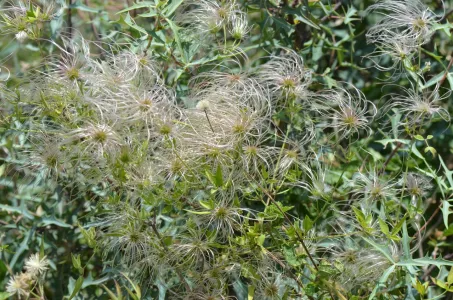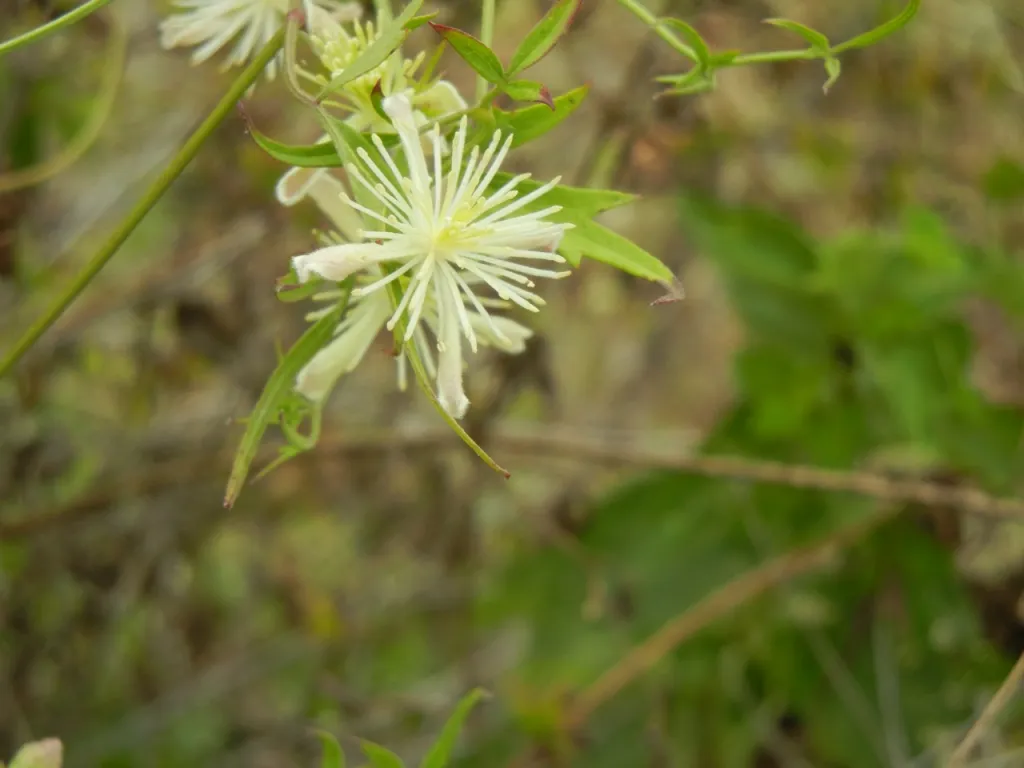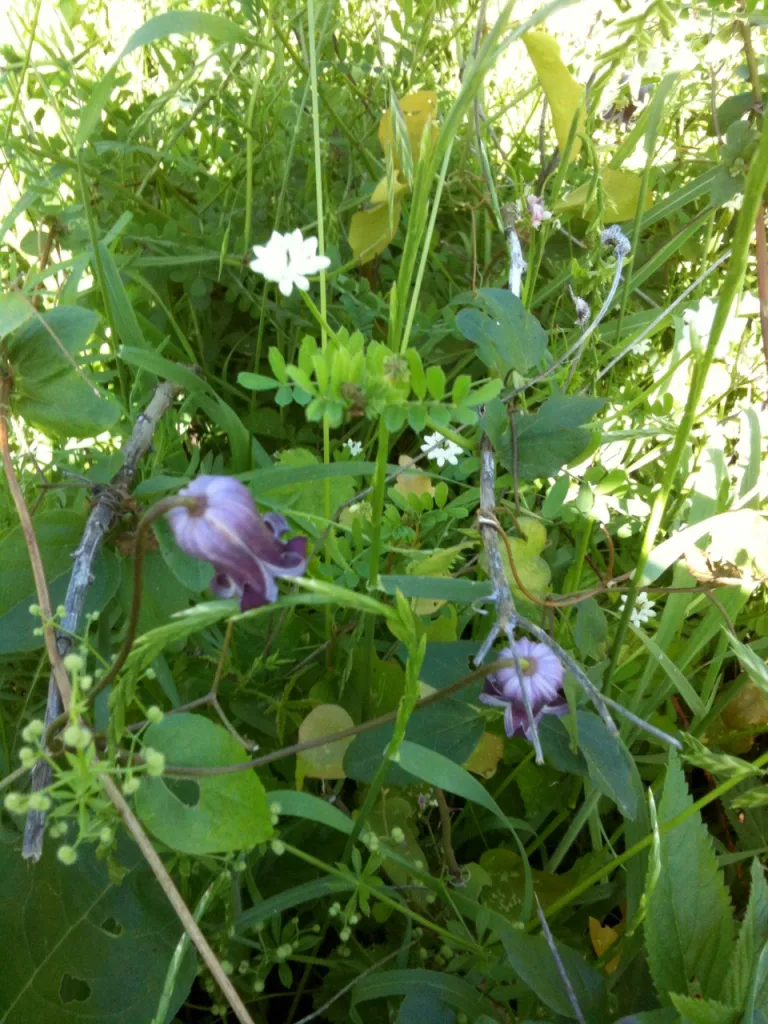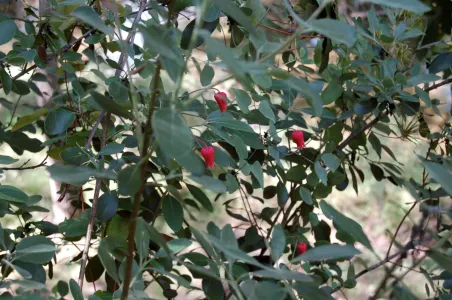By Delmar Cain
Driving back from Boerne, I see that at least one of our Texas native vines is thriving in the sun and rainfall of the present year. But now that I think about it I don’t remember this vine having a bad year since my wife and I moved to Boerne. If you have driven north on FM 474 I am sure that you have seen it along the fence before the horse farm.

It has several common names but my favorite is Old Man’s Beard (Clematis drummondii). It is also known as Drummond’s clematis, Texas virgin’s bower and goat’s beard. From its prominent multiple locations along the fence, it is obvious that it is a climbing vine, willing to cover a fence or other plants that are close.
Its compound and opposite leaves, with 5-7 short (1/2 inch to 1 inch) leaflets, are not visible from a drive-by along the road. Even the blooms, which are actually four light greenish-yellow sepals, are not obvious from the pavement. In botanical terms a sepal is the leaf-like segment of the calyx, an example being the green leaf-like structure that holds the colorful petals of a rose.
What is eye-catching about Old Man’s Beard and the reason for some of its common names are the masses of silky or feathery plumes, that grow out of the clusters of achenes or covered seeds that grow on the female vine. These hairs, 2 to 4 inches in length, give the appearance of an almost white beard, especially when the aggregate of seeds are seen from a distance.

Appearing in the summer, the achenes will linger into December, metaphorically consistent with the life of an old man. But Old Man’s Beard is perennial and will live to produce flowers and seeds in the coming year. It grows in full sun.
Virgin’s Bower is also listed, along with seepwillow or baccharis, as a host plant for the fatal metalmark butterfly (Calephelis nemesis), a butterfly that is found along the border from southern Texas to California. However, my good friend Terry Doyle, who has compiled an extensive list of butterflies in Kendall County, does not list the fatal metalmark as having been seen in Kendall County.
The scientific name for Old Man’s Beard, (Clematis drummondii) honors Thomas Drummond, a Scottish naturalist, who collected plant specimens in Texas and the southern United States in the 1830’s. A quick look in Enquist’s book, Wildflowers Of The Texas Hill Country, will reveal many other native plants in our area that were initially collected by and then named for Thomas Drummond.
Wikipedia indicates that the genus name, clematis, is from ancient Greek and meant a “climbing plant.” There are more than 300 species in the genus, which is in the Buttercup Family. Many of the species have been used to produce cultivars for the garden trade.
In the Hill Country there are also two other native species of clematis, which are probably not going to be seen from your vehicle on a Sunday drive. That is not to say that the plants would not be there. However locating them would take closer inspections, with a very nice reward if an inspection reveals their presence.

Clematis pitcheri, or as it is commonly named purple clematis, purple leatherflower or bluebill, is also a perennial vine. It is found along woodland edges, thickets, bluff edges and slopes from New Mexico to Tennessee and as far north as Iowa. In Texas it is found in scattered counties from Marion County in the east to Presidio County in the west.
The leaves and stems of purple clematis bear a family resemblance to Old Man’s Beard. But its colorful flowers set it apart. The flowers are also without petals and hang or nod on long slender stems. The four petal-like sepals are thick (hence the name leatherflower), curve up and spread on the tips. When I look at the flower I am reminded of the hat or collar of a court jester.
The flowers are dull-purple to dark-red on the outside. Inside the flowers may be red, purple or even greenish white. The flowers have some staying power, but the plant will die to the ground in the winter.

The other clematis is similar in appearance, but its blooms are even more striking. Texas clematis or scarlet leatherflower (Clematis texensis) is native only to seven counties in the southeastern Edwards Plateau. It is found on limestone cliffs, rocky slopes and streamsides.
Texas clematis is a climbing vine like purple clematis and its flowers may linger until frost. Its flower is similar in shape to the purple leatherflower, but its color, true to its name, is a beautiful scarlet. (The adjective is for Bob Niederhause). Because of its color it is widely cultivated.
So you have a choice of three clematis vines for your yard. All are dramatic when blooming. If sun is an issue, the Texas clematis should have part shade. The other two can do well in sun or in part shade. If you see a fatal metalmark butterfly, photograph it and let me know. We will get Terry Doyle to update his Kendall County list.
